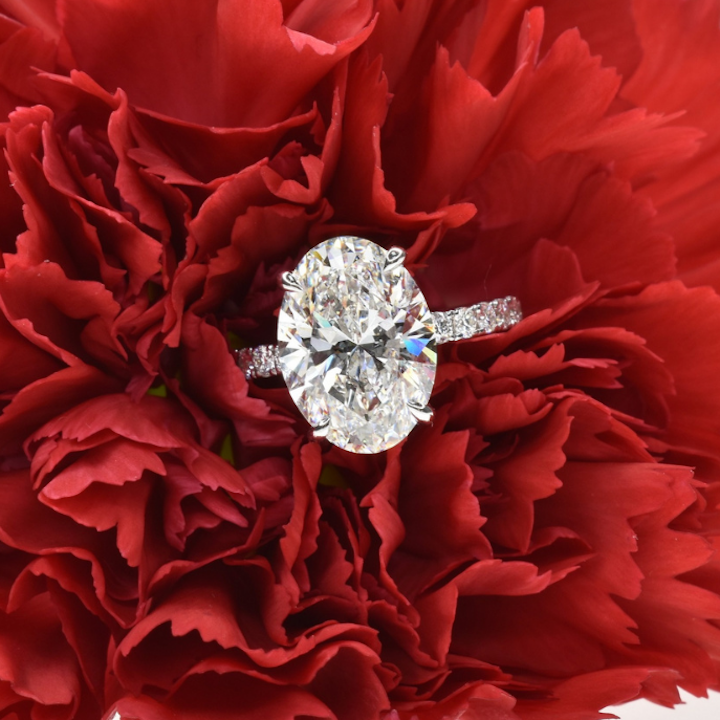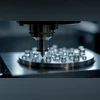Lab Grown Diamonds or Mined, Lab Made Diamonds: Which One is Right for You?
In recent years, a significant shift has taken place in the world of fine jewelry. A new contender has entered the scene, challenging traditions that have stood for centuries. We’re talking about lab grown diamonds. These stunning stones, created through advanced technological processes, are now competing with their naturally formed counterparts for a place in engagement rings, earrings, and high-end jewelry collections. But when it comes to choosing between lab grown diamonds or mined, lab made diamonds, many shoppers are left wondering which is the better choice.
This article dives into the differences, benefits, and potential drawbacks of each option, helping you make an informed and confident decision.
The Science Behind the Sparkle
To understand the debate, it’s essential to first recognize what lab grown and mined diamonds actually are. Both are composed of pure carbon atoms arranged in a crystal lattice structure. Physically, chemically, and optically, they are virtually identical—so much so that even expert gemologists often require specialized equipment to tell them apart.
Mined Diamonds
Mined diamonds, as the name suggests, are formed naturally under intense heat and pressure deep in the Earth’s mantle over billions of years. They are extracted through mining operations, which can range from industrial-scale open-pit mines to artisanal mining practices.
Lab Created Diamonds
Lab created diamonds, also known as lab made diamonds, are cultivated in high-tech laboratories using methods such as Chemical Vapor Deposition (CVD) or High Pressure High Temperature (HPHT). These techniques mimic the natural conditions under which diamonds form, but within a controlled environment, allowing the stones to grow in weeks instead of millennia.
Environmental and Ethical Considerations
One of the strongest arguments in favor of lab grown diamonds lies in their ethical and environmental advantages. Traditional diamond mining has long been associated with environmental degradation, deforestation, ecosystem disruption, and significant carbon emissions. In some regions, it has also raised serious human rights concerns, including forced labor, unsafe working conditions, and conflicts financed through diamond sales—hence the term “blood diamonds.”
A Cleaner Alternative
In contrast, lab grown diamonds offer a cleaner alternative. being created in controlled laboratory settings, they avoid many of the ethical issues associated with mining. They typically have a much lower environmental impact, requiring less water and energy and generating less waste.
However, it’s worth noting that not all lab-created diamonds are produced using renewable energy. As the industry matures, more companies are committing to clean energy and transparency in their manufacturing practices. Buyers interested in sustainability should look for certifications or brands that disclose their environmental footprint.
Price and Value: What You Get for Your Money
A major factor influencing the choice between lab grown diamonds or mined, lab made diamonds is cost. Lab created diamonds are typically 30–50% less expensive than mined stones of comparable size, cut, clarity, and color. This affordability can be particularly appealing to younger buyers, many of whom prioritize value and ethical sourcing over traditional prestige.
Why the Price Difference?
The lower price tag is due to production efficiency. Growing diamonds in a lab eliminates the costs associated with mining operations, labor-intensive extraction, and complex supply chains. Furthermore, lab diamonds don’t carry the same rarity factor as mined diamonds, which is often used to justify higher prices.
That said, mined diamonds still retain more value in the resale and investment markets. Historically, natural diamonds have been considered a store of value, and they often maintain their worth over time better than lab grown alternatives. While the resale market for lab made diamonds is growing, it is not yet as robust.
Aesthetic and Emotional Appeal
Some argue that the origin of a diamond contributes to its emotional value. The idea that a diamond took billions of years to form deep within the Earth and was then unearthed to symbolize a once-in-a-lifetime love story holds sentimental significance for many.
A Modern Symbol
On the flip side, others see lab grown diamonds as a symbol of modern values—a fusion of technology, ethics, and sustainability. They are just as brilliant, can be personalized through custom cuts, and are often viewed as a reflection of a conscious and forward-thinking mindset.
From a visual standpoint, there is no discernible difference between the two. Both sparkle brilliantly and can be certified by reputable gemological institutes like GIA or IGI. Consumers can expect the same range of choices in terms of cut, color, clarity, and carat.
Market Trends and Consumer Preferences
The demand for lab grown diamonds has surged over the last decade. According to industry analysts, lab diamonds accounted for nearly 15–20% of all diamond sales in the U.S. by 2024, and the trend continues to rise. This growth is fueled by greater consumer awareness, competitive pricing, and a cultural shift toward ethical and sustainable consumption.
Shifting Industry Focus
Major retailers and luxury brands have taken notice. Brands like Pandora have gone all-in on lab made diamonds, and other major names are expanding their lab-grown lines to meet growing demand. Meanwhile, mined diamonds continue to appeal to traditionalists and collectors who value their natural origins.
In today’s age of transparency and choice, both types of diamonds are carving out significant niches. The availability of certification, the rise of traceable sourcing, and consumer education have all played roles in leveling the playing field.
Making the Right Choice
So, when it comes down to it—lab grown diamonds or mined, lab made diamonds—which is better? The answer depends entirely on what you value most.
- If you prioritize ethics and sustainability, lab created diamonds are the clear winner.
- If investment potential and rarity appeal to you, mined diamonds may still hold the edge.
- If you’re budget-conscious but still want a stunning, high-quality gem, lab made diamonds offer unbeatable value.
- If emotional or symbolic significance is important, either choice can be meaningful depending on your perspective.
Ultimately, both types of diamonds can be beautiful, high-quality, and responsibly chosen. The key is to educate yourself, ask the right questions, and purchase from reputable retailers who offer transparency and certification.
Conclusion
The debate between lab grown diamonds or mined, lab made diamonds is far more than a matter of science—it’s a reflection of evolving consumer values, technological innovation, and shifting priorities in a rapidly changing world.
Whether you’re shopping for an engagement ring, a milestone gift, or a self-love treat, the good news is that you now have more options than ever before. With both lab and natural diamonds offering stunning beauty and craftsmanship, the right choice is simply the one that aligns with your values, budget, and personal story.



)
